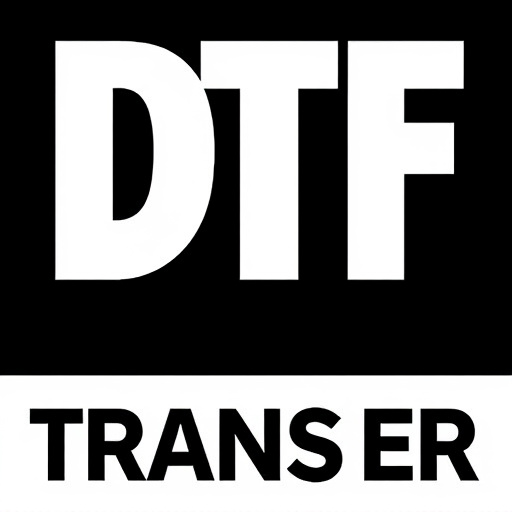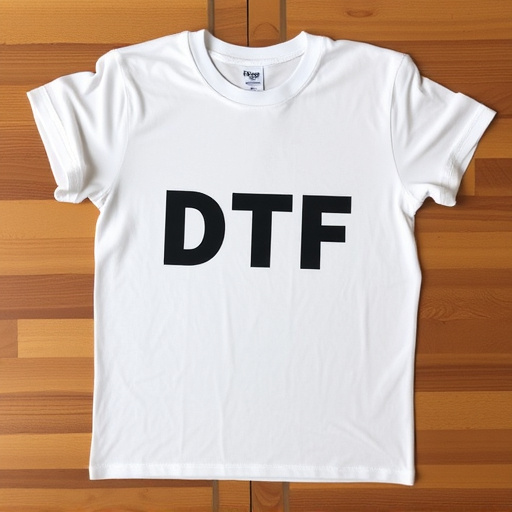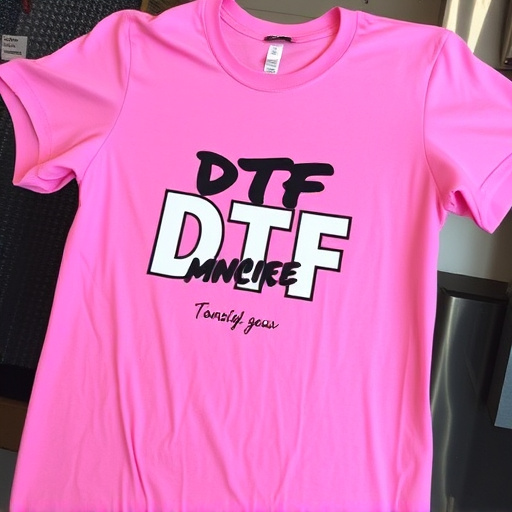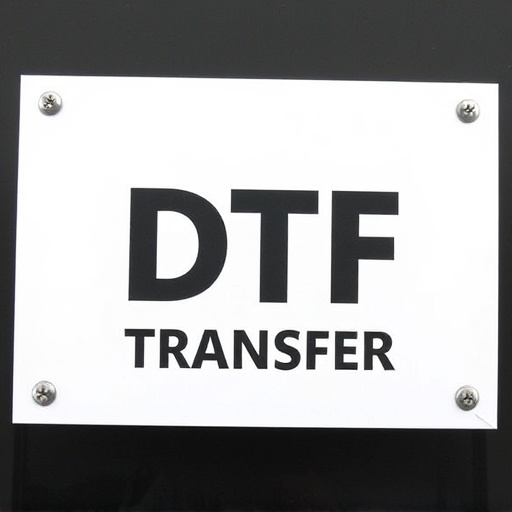Direct-to-film (DTF) prints transform manufacturing with durable, efficient marking solutions for various industrial applications. Using advanced techniques, vibrant films tailored to materials like metal, plastic, or wood ensure superior adhesion and longevity, enhancing clarity and precision in labeling machinery. DTF prints reduce costs, streamline production, handle complex designs, and offer resilience against harsh conditions, making them a versatile and reliable choice for manufacturers. Top-tier materials with robust backings and coatings extend print lifespans, while best practices ensure optimal quality and efficiency.
“In the manufacturing sector, where durability and visibility are paramount, Direct-to-Film (DTF) printing offers a game-changing solution. This innovative technology enables the production of high-quality, long-lasting labels and markings directly on various surfaces, from metal to plastic. In this article, we explore the world of DTF Prints, delving into their benefits, the underlying technology, material choices, diverse applications, and best practices for optimal performance in demanding manufacturing environments.”
- Understanding Heavy-Duty Direct-to-Film Transfers
- Benefits of DTF Prints in Manufacturing Environments
- The Technology Behind DTF Printing
- Material Considerations for Longevity and Durability
- Applications and Use Cases of DTF Prints
- Best Practices for Maintaining Quality and Efficiency
Understanding Heavy-Duty Direct-to-Film Transfers

Direct-to-film (DTF) prints are a game-changer for manufacturing environments, offering a robust and efficient solution for marking and identifying materials. This technology involves transferring high-quality images and graphics directly onto various film types, which can then be used for a range of industrial applications. Heavy-duty DTF prints are designed to withstand the rigors of manufacturing processes, ensuring durability and legibility even in harsh conditions.
The process starts with advanced printing techniques that produce precise and vibrant DTF films. These films are then carefully selected or formulated to suit specific substrate materials, such as metal, plastic, or wood, ensuring optimal adhesion and long-lasting performance. In manufacturing settings, DTF prints can be used for a multitude of purposes, from creating durable labels and markings on machinery to providing clear instructions or warnings on production lines, all while maintaining clarity and precision.
Benefits of DTF Prints in Manufacturing Environments

Direct-to-film (DTF) prints offer numerous advantages in manufacturing environments, revolutionizing how businesses create and utilize visual assets. One of the key benefits is their durability; DTF inks are designed to withstand harsh conditions, ensuring that labels and markings remain intact even in industrial settings. This longevity reduces frequent replacement costs and downtime associated with traditional printing methods.
Moreover, DTF prints enable fast production times and on-demand manufacturing, allowing companies to adapt swiftly to changing market demands. The efficiency of this process streamlines operations, enhances productivity, and contributes to cost savings. With their ability to produce high-quality, long-lasting markings, DTF prints are a game-changer for manufacturers seeking reliable and versatile solutions.
The Technology Behind DTF Printing

Direct-to-film (DTF) printing is a cutting-edge technology revolutionizing manufacturing processes, particularly for creating high-quality, durable transfers suitable for demanding industrial environments. This innovative method eliminates the need for intermediate layers, allowing designs to be applied directly onto various materials, including fabrics, metals, and plastics. The process involves advanced hardware and software combinations, ensuring precise color reproduction and exceptional resolution.
DTF prints achieve remarkable results by using specialized printers that deposit pigmented inks onto a film, which is then precisely aligned and transferred onto the desired substrate. This direct application minimizes waste and simplifies production, making it an efficient solution for manufacturing environments where speed, precision, and cost-effectiveness are paramount. With its ability to handle complex designs and robust materials, DTF printing offers manufacturers a versatile tool to enhance productivity and product quality.
Material Considerations for Longevity and Durability
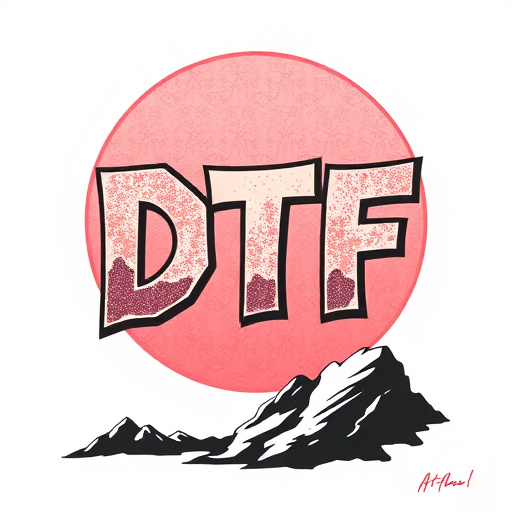
When considering heavy-duty direct-to-film (DTF) transfers for manufacturing environments, material choices are paramount for ensuring longevity and durability. High-quality films and inks designed specifically for industrial applications offer superior resistance to chemicals, extreme temperatures, and physical wear and tear. These materials not only withstand the rigors of factory floors but also maintain their integrity over extended periods, reducing the need for frequent replacements.
The choice of substrate is especially crucial. Opting for robust backings like polyethylene terephthalate (PET) or polyvinyl chloride (PVC) provides a stable base that prevents warping and ensures consistent print quality. Additionally, coatings on these materials enhance their resistance to moisture, oils, and other contaminants prevalent in manufacturing settings. This investment in high-performance materials pays off by extending the lifespan of DTF prints, enhancing operational efficiency, and minimizing downtime.
Applications and Use Cases of DTF Prints

Direct-to-film (DTF) prints have found their niche in various industrial and manufacturing applications, offering a durable and efficient solution for marking and identifying materials. These prints are particularly useful in environments where harsh conditions prevail, such as extreme temperatures, chemical exposure, or outdoor settings.
Use cases range from labeling hazardous materials storage containers to creating customizable templates for mold production. DTF technology enables fast prototyping, allowing manufacturers to quickly adapt designs and specifications. Additionally, its high-resolution capabilities ensure precise and clear markings, crucial for tracking and quality control processes. This versatility makes DTF prints a game-changer in many manufacturing sectors, enhancing productivity while ensuring safety and compliance.
Best Practices for Maintaining Quality and Efficiency

To maintain quality and efficiency in heavy-duty direct-to-film (DTF) prints for manufacturing environments, several best practices should be implemented. Firstly, ensure that all print components—from the film to the printing machine—are of high-quality and regularly calibrated to minimize deviations. Regular cleaning and maintenance checks are crucial to prevent buildup of contaminants that can affect print accuracy.
Additionally, establishing standardized procedures for preparation, printing, and post-processing is essential. This includes using appropriate materials and inks designed for industrial applications, as well as optimizing print settings to meet specific manufacturing requirements. Consistent monitoring and documentation of each step in the process enable quick identification and resolution of any issues, enhancing overall efficiency.










